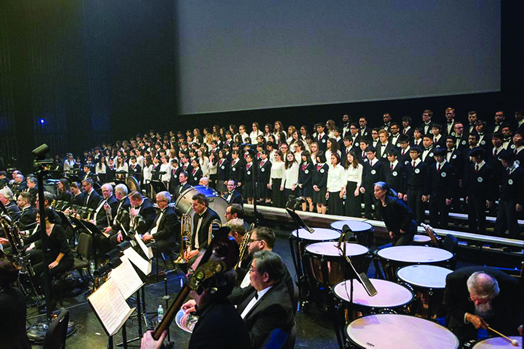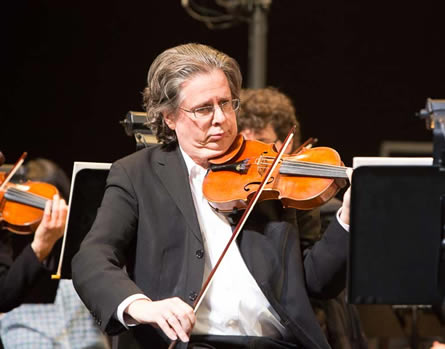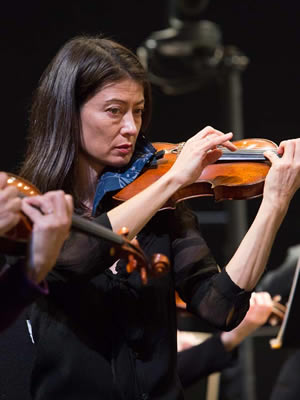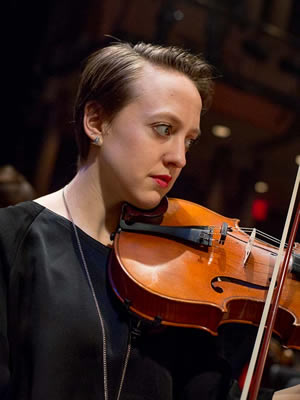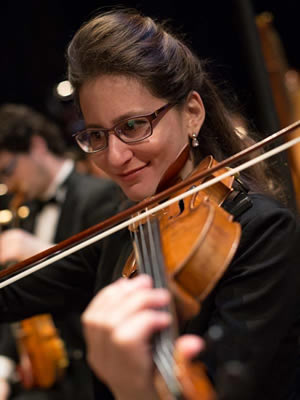Allegro
Classical Concerts Go Multimedia
Volume 116, No. 5May, 2016
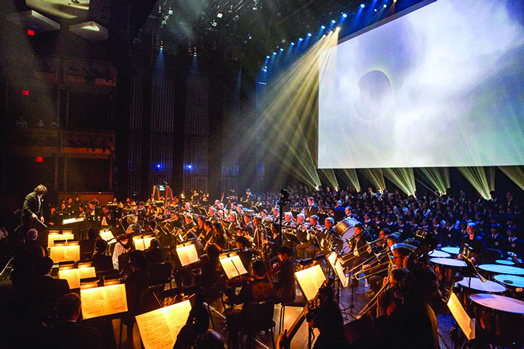
Something new has come to classical performances. The debut season of the Philharmonia Orchestra of New York brought unprecedented visual spectacle to two landmark symphonies of Mahler and Berlioz in a pair of concerts under conductor Atsushi Yamada. Not only was it the most performers ever assembled onstage at Lincoln Center’s Rose Theatre, but the concerts were also accompanied by full-length original films shot and projected in high-definition.
“We’re breaking classical music taboos,” said Yamada, who conducted the New York City Opera during the 2000s. “We’re bringing innovations from the world of film and popular music to add excitement, while staying true to the integrity of the music.”
The Philharmonia commissioned international stage director and video designer Joachim Schamberger to create films to accompany Mahler’s Symphony No. 2 (“Resurrection”) and Berlioz’s “Symphony fantastique,” which were projected on a massive screen. The films, some of which were shot with drones, drew imagery from the composers’ personal lives and the stories and themes explored in their symphonies. Six robotic cameras roamed the orchestra during the performances and projected live images of the musicians on the screen, drawing the audience closer to their intensity and athleticism. Dynamic, state-of-the-art lighting more typically found in pop and rock arena concerts added another visual dimension, courtesy of lighting designer Ayumu Poe Saegusa.
“We’re taking the kind of information a concert-goer would typically read in a printed program and expressing it in a grand visual way on the big screen,” said Schamberger, who has designed video for over 30 original productions. “My goal with the visuals is to enhance the experience and suggest a story, while leaving enough room for the audience’s own imagination to respond to the musical storytelling of the orchestra and chorus. My hope is to satisfy both musicologist and first-time concert-goer.”
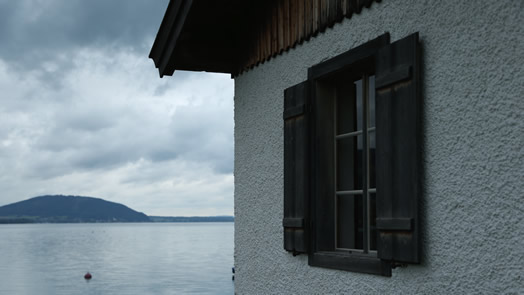
The debut season of the Philharmonia Orchestra of New York featured accompanying films and robotic cameras. Above, a scene from the movie that accompanied a live performance of Mahler’s Symphony No. 2. It’s an image of the alpine lake where Mahler composed his work.
Mahler’s transformative masterpiece was a journey on a grand scale. Schamberger’s film reflected on the symphony’s theme of resurrection, taking the audience to locations of Mahler’s own life from the small hut on an alpine lake where he composed the work (see photo above) through breathtaking natural vistas all the way to the composer’s final resting place in Vienna. The text sung in the fourth and fifth movements was integrated in English into the film.
The film accompanying Berlioz’s symphonic hallucination had a stronger narrative thrust as it told the story of the composer’s infatuation with famed Shakespearean actress Harriet Smithson, for whom he wrote the symphony. His bizarre love letter reflected his own attempts to seduce her, leading to his own imagined beheading and a dance of witches. Audiences followed Harriet in a story of obsession and unrequited love come to life on screen.
The series also featured a performance of Minoru Miki’s “Requiem,” in commemoration of the 15th anniversary of 9/11 and the fifth anniversary of the Great East Japan earthquake and tsunami of 2011, in which almost 16,000 people lost their lives.
Maestro Atsushi Yamada is a self-taught musician who worked for IBM and Sony before pursuing his passion for music. He interned at the New York City Opera and served as assistant conductor to its music director, George Manahan, before becoming a regular conductor with the company. He has a long history of intertwining music with cultural exchange and charity work. The Mahler concert featured more than 200 chorus members, including students from Japanese high schools and the College of New Jersey. The Philharmonia invited the students to perform in the concert through Project Hand-in-Hand, which aims to support the recovery from the East Japan disaster by creating international friendships and exposing students to global views.
The Philharmonia Orchestra of New York is composed of musicians who have played with all the major Lincoln Center ensembles, including the Met Opera, New York Philharmonic, New York City Ballet and the New York City Opera. Musicians are covered under a Local 802 contract. Union member David Titcomb is the co-founder and orchestra manager. The ensemble has worked with technology since its debut last year. A collaboration with Andrea Bocelli at Madison Square Garden featured video projection, as did a program of Danny Elfman’s music at the Linconlc Center Festival. Truly this is one future of classical music performance.
